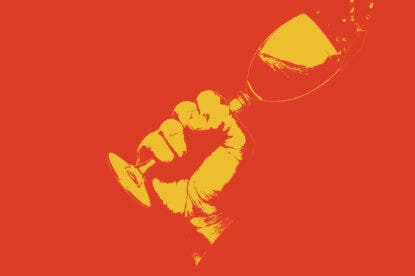Many wine collectors are skeptical and pessimistic about purchasing wines from those less-than-optimal vintages. It’s difficult not to be—after all, news of a tough vintage tends to go far, in some cases further than news of a fabulous vintage. When the growing season is cold, damp or experiences late season rain or hail, it can certainly affect the grapes grown that year. But does that mean that all wine from a less-than-stellar vintage is going to be subpar? Absolutely not!
The Stages of Development
In the best of vintages, the fruit ripens to the ideal plumpness, sweetness and pH on the vine, which leads to higher sugar levels. These wines will typically have higher alcohol levels, as there is more sugar for the yeast to consume during fermentation. This leads to the byproduct of alcohol. When fruit is so concentrated, it creates denser wines. Tannins also develop with more fervor, giving wines a bit more backbone to them. In these optimal vintages, there is enough of a diurnal temperature range such that mornings and nights are much cooler than the days. Acidity is properly developed.
So, in a nutshell, great vintages lead to high quality and a greater number of grapes grown. This in turn leads to a greater amount of wine with higher levels of concentrated fruit and desirable structural components.
On the contrary, cool, wet vintages can lead to grapes that experience a slower, or potentially lack of, development. Fruits may not reach their full concentration levels and tannins may get stuck in sort of a green phase. Lower fruit concentration also means lower alcohol levels.
However, the acidity can still remain high, as cooler climate wine regions are often known for their bright and refreshing high-acid wines. But just because all these structural levels are not turned to 11, it does not mean that wines produced in these vintages are destined to be of poor quality. It just means that they may not age as gracefully as those better vintage wines will.
Seek Out the Deals
Don’t get me wrong, producing top quality in poor vintages is no easy feat. But there are many wine producers who know exactly how to take fruit from a given harvest and coax out its best qualities.
Not only that, sometimes waiting for wines from the best vintages to age and evolve until they reach their peak can be a little… well… exhausting. Off-vintage wines can offer serious value to their prime vintage counterparts. So, if you are one of those collectors who can afford a 2005 Bordeaux or 2007 Napa Cab—as well as the patience to wait for them to age to perfection—more power to you. But for some, the value and drinkability of an off-vintage may provide a more enjoyable overall experience.
For example, I had a bottle of 2014 Châteauneuf-du-Pape from a well-known and respected producer in my cellar for a few years. I was waiting for the right moment and the right company to pop it open. When my folks came over for a roasted turkey dinner with all the trimmings, the opportunity was there to be seized. That year was a wet and cold vintage and was followed by two fabulous ones in the Southern Rhône. But with Pegau being one of the more consistent CDP producers in the region, I was willing to take my chances on popping it open on the early side.
While the wine was certainly on the vibrant and delicate side, it was drinking just beautifully in its infancy. Lovely black fruits, black pepper spice and dried herb aromas gave way to forest floor, mushroom and meaty flavors on the palate, with a finish that was long and lingering. The acidity kept the structure in perfect balance while the tannins were smooth as silk, making a perfect pairing for the bird and its many sides.
I recently had a similar experience when I had the opportunity to taste some Left Bank Bordeaux wines (including some of my favorite Grand Cru selections) from 2012, which was a less than stellar vintage in that region. The cool climate of that year brought about racy acidity, and because the fruit was not able to fully ripen, these wines exuded wonderful earthy, tobacco and cedar aromas with only a decade of aging. It can often take decades for those beautiful tertiary aromas and flavors to unveil themselves in many Bordeaux wines.
Could these wines have aged much longer? Absolutely, but the fruit will continue to turn more dried over time before it starts fading entirely. That means that depending on your palate, they may be less enjoyable as they continue to age. By opening my Châteauneuf-du-Pape on the early side, I was able to share a beautiful, complex and balanced wine with family members who truly enjoyed it. It was, in every sense, a regret-free bottle opening. What could be better?
Last Updated: November 8, 2023















